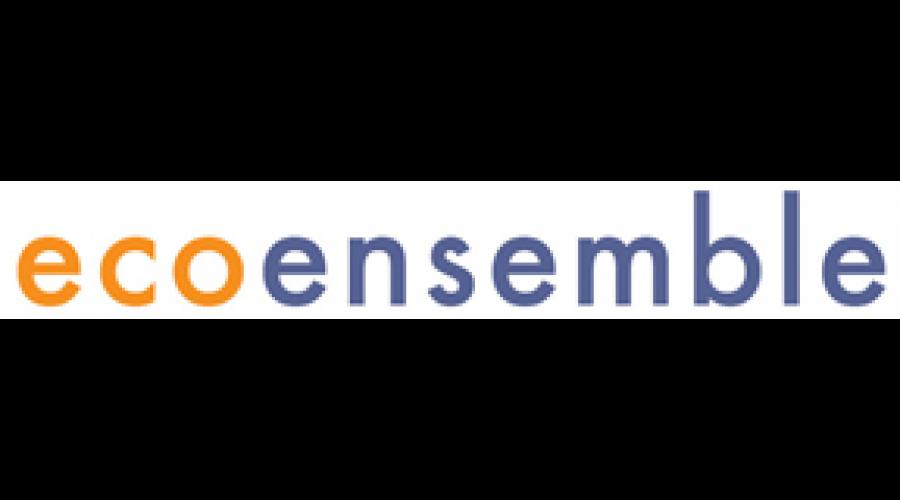Archive
CNMAT Flashback
A look back at some items in our archives.
Eco Ensemble: New works by UC Berkeley graduate student composers
Composition Colloquium in 125 Morrison Hall: Jean Bresson, Computer-Aided Composition
Archive Browser
Floor Protector and Force Sensing Resistor (FSR)
[inline-left:Figure1.jpg]
The foot/switch interface is provided by a soft but “grippy”
toroidal ring of molded rubber embedded in a hard PVC disk.
These disks are sold as “floor protectors” for furniture. A flat
ring of polyurethane foam with a peel-off adhesive is on the
opposite face of the disk. This foam provides the restoring force
Floor Protector and Piezoresistive Fabric
[inline-left:Figure2a.jpg]
This pressure sensor use a printed circuit board (PCB)
containing dozens of adjacent conducting strips and a patch of
piezoresistive fabric made by EEonyx (http://eeonyx.com). The
measuring principle is basically that of the FSR except we have
exchanged the position of the conducting elements and
piezoresistor with respect to the foot.
Floor Protector, Piezoresistive Fabric, Conductive Adhesive Copper Tape, Conductive Fabric
[inline-left:agile2.jpg]This sensor uses a conductor on either side of the
fabric instead of an interdigitated pair of conductors at the base. The base conductor is a series of overlapped adhesive
copper strips. They form a single conductor because the adhesive itself is a conductive acrylic.
The top conductor is a copper coated nylon fabric. The
Half-round, Piezoresistive Fabric, Conductive Heatshrink and Copper Tape
[inline-left:Figure4.jpg]The previous designs are limited by the sizes of floor protecting
disks available. This construction is free
of these size constraints.
A half-round wooden strip is cut to the desired length and two
separate strips of copper tape are employed on the flat length
and the curve. A strip of piezoresistive fabric is trapped and
E-field (Capacitive) Sensing Foot Switch
The previous examples use the same physical sensing
principle: gesture modulating current flow. Capacitive or e-field
proximity sensing is an interesting alternative principle to apply
for rapid prototyping. Only one conductor is needed and more
flexibility about where the conductor is placed is available. It
can be under glass, plastic or wood or other non-conducting
material.
Position Sensing Trip and Rubber Door Threshhold
To create multiple foot switches we can simply tile out arrays
of the previously described devices. There is a better, faster
way with the additional convenience that the switch functions
are built into a single strip that is constructed quickly in a few
steps. Instead of employing the principal of piezoresistivity
change we employ a printed-resistor position-sensing strip such
Foot, Shoe and Sock Controllers with Fiber, Fabric and Other Malleable Materials
This book is an overview of materials, designs and techniques for constructing Foot, Shoe and Sock Controllers with Fiber, Fabric and Other Malleable Materials
Building Foot-Switches with Fiber, Fabric and Other Malleable Materials
A simple gestural controller indeed, but the humble footswitch finds
wide use in technology-based musical performance contexts
because the performer’s hands are usually actively engaged
playing an instrument.
The traditional approach is to mount a
heavy-duty mechanical switch into a solid metal box. These
“stomp boxes” are standard tools of the electric guitarist. As a
Shoe Controllers with Fiber, Fabric and Other Malleable Materials
Overview here of the MIT, Nike and other shoe controller work using piezo's, inertial sensing and FSR's.
Introduction to Joy Slippers project
Then example sections (as child pages of this page) of more fabric based approach covering the various Joy Slippers versions.
Users Guide
Here is a small collection basic use information.
Hardware Plaforms
Information about specific platforms / targets.
OSC Address Schema
The OSC address schema of micro-OSC is broken down into a number of modules. Not all modules may be present depending on the hardware support and compile-configuration. Some addresses may change in the future--this document will be updated to reflect the current state of the OSC message address schema.
Status LED
Enables control over on-board status lights.
-----
**/status/0** : Get/set status light state
Some boards have more status lights, which are numbered /0 /1, etc.
Understands "on", "off", 0, 1.
TX: [ /status/0 ]
RX: [ /status/0 ,i 0 ]
TX: [ /status/0 ,s "on" ]
RX: [ /status/0 ,i 1 ]
Profile
The profiling system is enabled by a compile-time switch.
-----
**/profile/** : Reports timer measurements made over various sections of code.
These messages are reported approximately once per second.
uOSC Developer Documentation
Documentation for the uOSC Developers Group.
Device
-----
**/device/id** : Get/set device identification string.
The identification string is an ASCII character sequence, limited to 8 characters in length. It is automatically populated with a random-number on first startup. The device ID is also reported as the "serial number string" in the USB descriptor, but you will need to restart the device for this to be updated.
EEPROM
The EEPROM module is an experimental module, mainly of interest to developers. It interfaces directly to the EEPROM at the byte level. Presently only the first 64 bytes are in use by micro-OSC, and the current platforms have 256, however more space may be required in the future.
Terms of Use
The following copyright notice and terms of use apply to the micro-OSC firmware, its source code, and other supporting software distributed by CNMAT:
Copyright © 2008 The Regents of the University of California (Regents). All Rights Reserved.
OSC over the USB-Serial Transport
# Overview
A serial port is a bidirectional point-to-point communications channel. Open Sound Control is a datagram protocol which means that it requires a packetized transport (UDP is a common example of this). Serial isn't a packetized transport (nor is, for example, TCP).
# The SLIP framing protocol
USB Descriptor and Device Identification
Here is an overview of the micro-OSC device descriptor.
The VendorID/ProductID used is by permission from Microchip Technology Inc. under a sublicense agreement. This VID/PID may only be used with Microchip products.



